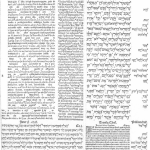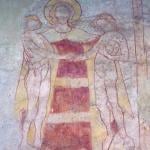A BRIEF VISIT TO NEW ORLEANS:
…Driving through Lakeview, a suburb which hugs Lake Pontchartrain and borders the University of New Orleans, where I went to school, I was afforded a much closer view of the same conditions. Here the water line is marked by a thick rusty smear sometimes twelve feet off the ground. FEMA trailers are parked out in front of many of the homes, which seemed to me way past salvaging. Spray-painted glyphs on the sides of houses track the efforts of the SPCA as they searched for pets after the sadder business of human body removal had been completed. Small bushes and shrubs which had been completely submerged in the toxic waters are uniformly dead. They look like no dead plants I have ever seen before: they are not brown but a flat grey, like ashen constructions, like enormous leached brains lined up along the neutral ground and nestled in people’s front lawns.
Here it was also clear how social class made a difference. The devastation is now almost categorically confined to low-income areas. Partly this is due to the fact that much of the wealthier New Orleanians lived on higher ground, and as the city expanded the less affluent had to move into the cheaper houses being built on converted swampland. But in the Lakeview area there are some upscale houses, and most of these had already been repaired and looked pretty damned good. Those who were waiting for insurance money to bail them out — and the insurance companies are insisting that what happened to these houses was flood damage, not storm damage, thereby neutering thousands of claims — are still waiting.
[clipped]











